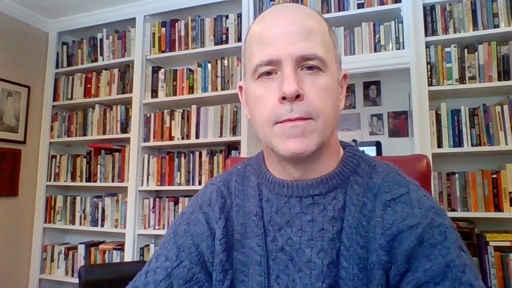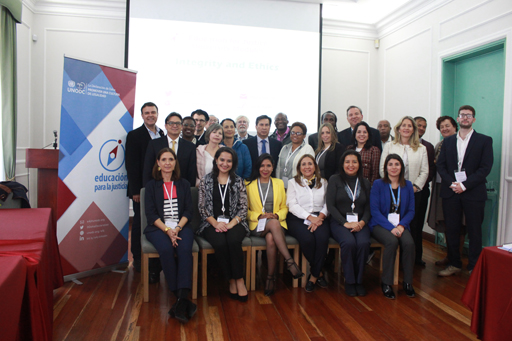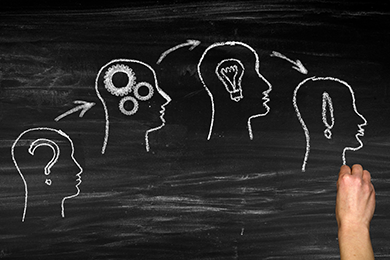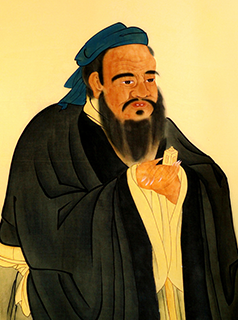Use 'Print preview' to check the number of pages and printer settings.
Print functionality varies between browsers.
Printable page generated Friday, 21 November 2025, 7:12 AM
Unit 1: The power of prior knowledge and experience
Unit 1: The power of prior knowledge and experience
Welcome to unit 1 which explores the learning principles that underpin the power of prior knowledge and experience. Watch this video where James Lang explains how an effective way to help students learn something new is to test it against what they already know.

Transcript
Whenever we are learning something new, we normally begin by testing it against what we already know. Researchers refer to what we already know as our prior knowledge, and it turns out that our prior knowledge has a substantial impact on how we process and understand new learning.
The educational theorist Jean Piaget argued that our prior knowledge takes the form of schema, which one might think about as mental models or conceptual maps of our understanding in a particular area. Bain (2004) provides an overview of the theory of schema especially in how it relates to university teaching. We have schema in our minds that govern all our thinking and action.
As teachers, we want students not simply to filter our course content through their existing models, but to change and expand those internal models. One of the most effective ways to accomplish this is by having students articulate and reflect upon their prior knowledge and mental models prior to learning something new.
When students are invited to discuss their understanding and experiences of a subject before they have gained initial exposure to it, this opens the student up to the prospect of change. Moreover, as a happy corollary, this process helps us recognize the specific misconceptions and problems the students have, and it enables these points to be addressed more effectively.
In short, if we do not understand or discuss the ethical understandings that students bring into the room, we are less likely to reach the students with any of the course content. In many of the Modules, we encourage you to invite students to surface their current ideas about ethics, or engage in ethical decision-making activities, before you present the content to them for the first time. This helps students to surface and discuss their prior knowledge and experiences, and gives you a clear picture of what will be most important for you to address and emphasize throughout the Modules.
Almost any learning experience is enhanced when students first have the opportunity to articulate and discuss their prior knowledge about a subject matter. This process can at times seem messy and inefficient, as the students’ initial discussions or ideas will not yet be informed by the theories and ideas which you hope will enrich their understanding.
However, taking even a short amount of time to learn about their understanding helps you to realize the best way to change and enhance the mental models that you have brought into the room.
1.1 Challenges of teaching anti-corruption, integrity and ethics
To illustrate the application of this theory let’s explore the concepts of integrity, ethics and corruption introduced in the E4J Modules. Watch this video in which Matthew Ayibakuro highlights the challenges of teaching integrity and ethics.

Transcript
E4J Ethics Module 1 provides a brief introduction to the concepts of integrity and ethics and Anti-Corruption Module 1 explores how the concept of corruption is defined and applied. These materials are designed to be used by lecturers who wish to provide their students with conceptual clarity and expose them to ethical dilemmas and ethical decision-making. A summary of some of the key points are provided below, but you may also want to introduce additional material into your teaching to explore these concepts in more detail.
Anti-corruption, integrity and ethics
The concept of integrity has been added in order to broaden the focus from the more traditional fields of ethics and anti-corruption and to provide a conceptual link between them. Combined, the concepts of anti-corruption, integrity and ethics provide a more comprehensive perspective - they allow us to move beyond discussions about the difference between right and wrong, in order to focus on relationships and communities as well as individual behaviour.
Discourse about integrity
Integrity is a term that is used in many different contexts, for example by referring to information, art or music. From a philosophical perspective discussions about integrity usually involve an ethical or moral dimension, according to the Stanford Encyclopedia of Philosophy:
Ordinary discourse about integrity involves two fundamental intuitions: first, that integrity is primarily a formal relation one has to oneself, or between parts or aspects of one's self; and second, that integrity is connected in an important way to acting morally, in other words, there are some substantive or normative constraints on what it is to act with integrity. (Cox et al., 2017)
Activity 1.1 How would you define integrity? 
In as few words as possible write below your definition of integrity.
Answer
Integrity is defined as "strict adherence to moral values and principles" by the Chambers 21 st Century Dictionary (Chambers, 1999). The following discussion on integrity mentions the origin of the word and different applications:
The concept of integrity has been derived from the Latin "integritas" (wholeness). It is defined as consistency between beliefs, decisions and actions, and continued adherence to values and principles. When someone is described as a person of integrity, the suggestion is that such a person is not corruptible as a result of the "wholeness" and "connectedness" of the values and principles that such a person subscribes to.
Integrity is often used in conjunction with ethics, suggesting that the values and principles that are adhered to should be ethical values. Some of the values that are often mentioned in this regard are honesty, openness, accountability and trustworthiness.
Organizational integrity refers to the ability of individual organizations to develop and implement an integrity management framework, and for employees to act in accordance with the values of the organization. (Visser, 2007 p. 278)
1.2 Types of integrity
Different types of integrity have been identified; the Stanford Encyclopedia of Philosophy includes the following:
Self-integration refers to the ability of individuals to integrate various aspects of their own personality into a harmonious whole.
The identity view of integrity refers to the way in which individuals make commitments about the things with which they deeply identify (in other words: acting in a way that reflects their sense of who they are).
The self-constitution view of integrity refers to actions that can be endorsed by oneself at the time of acting as well as by a future self.
Integrity as "standing for something" brings a social dimension into the definition: it entails making judgement calls but also requires respect for the judgements of others.
Integrity as moral purpose - this approach describes integrity in terms of a commitment or a clear intent to live a moral life. It makes provision for others to disagree with the views of an individual while acknowledging at the same time that she or he is a person of integrity (Cox et al., 2017).
In the following activity you will explore an example of how to encourage your students to explore different concepts of integrity.
Teaching concepts of integrity
Activity 1.2 Conceptual analysis of integrity 
1.3 Ethics
Turning to the concept of ethics, Norman (1995, p. 1) has defined ethics as "the attempt to arrive at an understanding of the nature of human values, of how we ought to live, and of what constitutes right conduct."
The dictionary definition of ethics is "the study or the science of morals" (Chambers, 1999). Morality is defined as "a sense of right and wrong" and being moral as "belonging or relating to the principles of good and evil, or right and wrong" (Chambers, 1999).
Chinese ethical thought
While E4J Ethics Module 1 focuses mostly on Western philosophical thought, it also acknowledges the critical contribution of non-Western philosophy. For example, the Stanford Encyclopedia of Philosophy states the following about Chinese ethical thought:
The tradition of Chinese ethical thought is centrally concerned with questions about how one ought to live: what goes into a worthwhile life, how to weigh duties toward family versus duties toward strangers, whether human nature is predisposed to be morally good or bad, how one ought to relate to the non-human world, the extent to which one ought to become involved in reforming the larger social and political structures of one's society, and how one ought to conduct oneself when in a position of influence or power.
The personal, social, and political are often intertwined in Chinese approaches to the subject. Anyone who wants to draw from the range of important traditions of thought on this subject needs to look seriously at the Chinese tradition. (Wong, 2017)
Confucius
One of the most important figures in this tradition is Confucius. He lived approximately between 551 and 479 BC and was a philosopher and founder of the Ru School of Chinese thought. His teachings were preserved in the Lunyu or Analects. His approach is summarized as follows by the Stanford Encyclopedia of Philosophy:
Confucius believes that people live their lives within parameters firmly established by Heaven-which, often, for him means both a purposeful Supreme Being as well as 'nature' and its fixed cycles and patterns-he argues that men are responsible for their actions and especially for their treatment of others. We can do little or nothing to alter our fated span of existence but we determine what we accomplish and what we are remembered for. (Riegel, 2013)
When we deal with difficult decisions, we often feel that there is no clear answer that is right, but we sense intuitively that the decision is about the distinction between right and wrong. Discussions about integrity and ethics address the fundamental distinction between right and wrong. This type of decision is much more difficult than deciding whether we prefer one type of food to another, or whether the answer to a simple mathematical equation is right or wrong.
The following activity provides an example of how to explore this area with your students.
Activity 1.3 Teaching concepts of ethics 
To engage your students and test their conceptual analysis of ethics you ask the students to divide into groups of three or four, to reflect on their understandings of the concept of ethics, and together to synthesize their understandings into a short, clear and precise formulation.
A few groups provide feedback to the class, by sharing their ideas about the nature of ethics. You share a textbook definition of ethics, as outlined above, and discuss the differences and similarities between this definition and your students’ suggestions.
1.4 Corruption
E4J Anti-Corruption Module 1 acknowledges that corruption defies simple definition due to the importance of contextual factors and notes that the United Nations Convention against Corruption (UNCAC) - does not define corruption as such. It rather defines specific acts of corruption, and urges States parties to criminalize these acts in their jurisdictions. Other international bodies attempt general definitions which provide a good starting point to help students get to grips with the concept. For example, the Organisation for Economic Co-operation and Development (OECD) considers corruption as "the abuse of public or private office for personal gain" and the non-governmental organization (NGO) Transparency International (TI) defines it as "the abuse of entrusted power for private gain".
Other perspectives on the definition and impact of corruption are offered which overlap and reinforce the material on integrity and ethics. These include, approaching it as a defect of moral character, or lack of civic virtue, and examining its political, cultural and economic effects.
The following activity illustrates how you could explore the issue of defining and identifying corruption with your students.
Activity 1.4 Exploring definitions of corruption
This activity is summarised from E4J Anti-Corruption Modue 1.
Ask your students to work individually, or in small groups of 3-5, and take 10 minutes to write down on a piece of blank paper a general definition of corruption - a single definition that conveys the entire concept.
Once those five minutes are up, either ask students to read and explain the definitions they noted, or to shuffle the anonymous pieces of paper and hand them out to the class at random, asking each class member to read and argue the pros and cons of the definition they received. You can push back against and gently critique each definition, exposing its limitations and assumptions.
1.5 Engaging students in activities
The E4J University Modules on Anti-Corruption, Integrity and Ethics include over 130 interactive exercises. The activities allow students to think about what they already know as well as helping them learn something new.
However, as students' prior knowledge and exposure to these issues vary widely, decisions about appropriateness of exercises should be based on their educational and social context. You are encouraged to relate and connect each exercise to the key issues presented in the modules.
Here are two further examples of interactive exercises to illustrate how the Modules engage and facilitate students’ learning across the related issues of anti-corruption, integrity and ethics:
Activity 1.5 Case study – The Parable of the Sadhu 
The following activity illustrates how the E4J Modules utilise the power of prior knowledge and experience to support students’ engagement with anti-corruption, integrity and ethics issues.
Activity 1.5.1 Reception on values 
This activity is taken from an exercise in E4J Ethics Module 13.
After a short brain-storming session on important values, you distribute cards to the students and ask them each to write on the card one value that is the most important value in their life.
Ask them to imagine that they are at an opening reception of a new programme and must introduce themselves to the other students by referring to the value on their card. Their card is their business card.
They must go to others and present themselves by explaining their guiding value. After short mutual introductions, they should walk to others, to make new contacts. Give the students ten minutes to mix and talk, and then collect the cards and post them on a board or flipchart.
How do you think students will react in your locality to this activity?
Answer
You will have different experiences of using these activities depending on your locality. In this exercise, acknowledge variety and similarity of values, and ask 'How did it feel to introduce yourself with your guiding value?' Students will probably share the fact that we rarely speak about values.
You can emphasize the importance of speaking about values for creating shared values and mutual trust among people. If students need examples of values, they can draw on the list available on the MindTools website (scroll to "step 4").
1.6 Conclusion

In this unit we have discussed the learning principle that underpin the power of prior knowledge and experience. To illustrate the application of this theory we have explored the concepts of integrity and ethics introduced in E4J Ethics Module 1 and approaches to defining corruption discussed in E4J Anti-Corruption Module 1.
Go to Unit 2: Varied and active engagement now.


